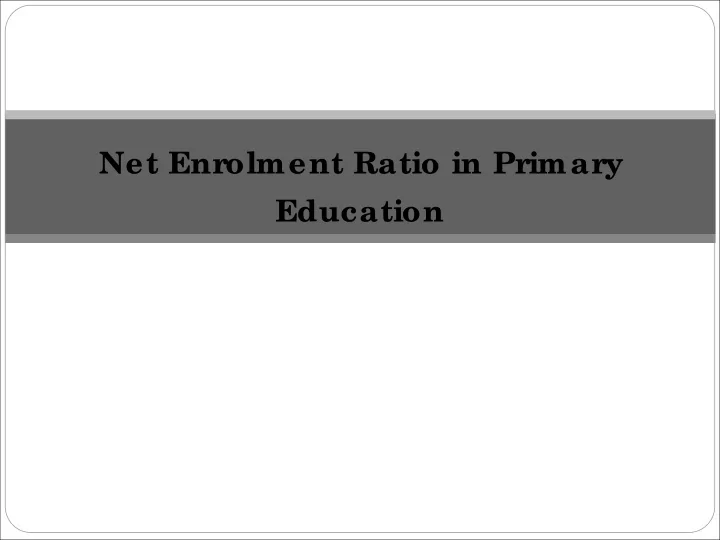

Net Enrolment Ratio in Primary Education
DEFINITION : NET ENROLMENT RATIO IN PRIMARY EDUCATION (Source : UNITED NATIONS Handbook of Indicators for Monitoring the Millenn (Source : UNITED NATIONS Handbook of Indicators for Monitoring the Millennium Development Goals, 2003) ium Development Goals, 2003) Net primary enrolment ratio is the ratio of the number of children of official school age (as defined by the national education system) who are enrolled in primary school to the total population of children of official school age. Primary education provides children with basic reading, writing, and mathematics skills along with an elementary understanding of such subjects as history, geography, natural science, social science, art and music
DEFINITION : NET ENROLMENT RATIO IN PRIMARY EDUCATION ( Source Source : : UNESCO Institute of Statistics (UIS)) ( UNESCO Institute of Statistics (UIS)) Total net primary enrolment rate in primary education is the number of children of official primary school age who are enrolled in primary or secondary education as a percentage of the total children of the official primary school age population
National Data International Data (UIS Data) Denominator: Denominator: Year NER NER (population) (population) 1990 1991 1992 1993 1994 87.5 624,801 1995 86.9 669,679 1996 87.9 709,470 1997 89.8 750,545 1998 90.9 783,752 1999 92.2 819,625 349,217 98.9 2000 91.7 857,911 360,044 99.1 2001 92.1 894,649 373,263 99.0 2002 92.0 928,839 389,294 98.4 2003 91.3 963,063 407,585 94.6 2004 89.0 999,247 426,941 88.6 2005 87.5 1,035,374 445,669 82.4 2006 83.9 1,070,808 462,532 79.8 2007 477,131 77.4 2008
Why is Discrepancies � Differences between national education systems and ISCED97 � Differences between the national population estimates and the United Nations Population Division population estimates � Differences in used definition of indicators
Recommend
More recommend